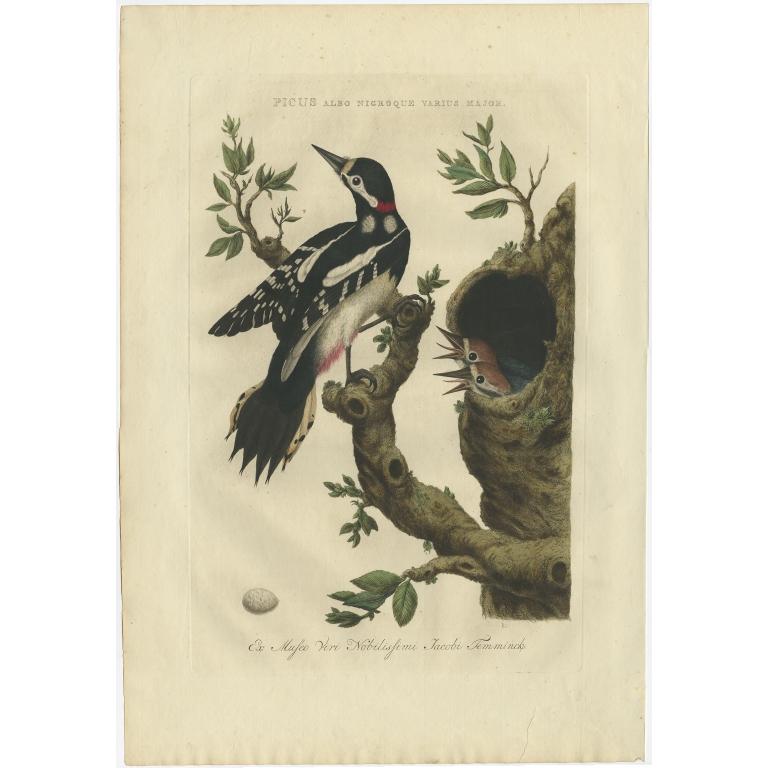FREE
WORLDWIDE
SHIPPING
No products
BG-05991-23
Antique Bird Print of the Great Spotted Woodpecker by Sepp & Nozeman (1770)
- Condition: Good. General age-related toning. Marginal tear at bottom left. Please study image carefully.
- Date: 1770
- Overall size: 37 x 53 cm.
- Image size: 27.5 x 42.3 cm.
Worldwide
shipping
Description: Antique print titled ‘Picus albo nigroque various major'. This print depicts the great spotted woodpecker (Dutch: grote bonte specht). The great spotted woodpecker (Dendrocopos major) is a medium-sized woodpecker with pied black and white plumage and a red patch on the lower belly. Males and young birds also have red markings on the neck or head. This species is found across Eurasia and parts of North Africa. Across most of its range it is resident, but in the north some will migrate if the conifer cone crop fails. Some individuals have a tendency to wander, leading to the recent recolonisation of Ireland and to vagrancy to North America. Great spotted woodpeckers chisel into trees to find food or excavate nest holes, and also drum for contact and territorial advertisement; they have anatomical adaptations to manage the physical stresses from the hammering action.
This print originates from 'Nederlandsche Vogelen; volgens hunne huisdouding, aert, en eigenschappen beschreeven", Amsterdam, 1770-1829 by C. Nozeman, M. Houttuyn and J.C. Sepp. This is the most important and first study in the Netherlands of ornithology at that time. The birds are depicted as they are in life, said to be depicted close to life sized and in their environment.
Original text page included.
Artists and engravers: This monumental work is associated with Christiaan Andreas Sepp, Jan Christiaan Sepp, Jan Sepp, Cornelis Nozeman, Martinus Houttuyn and Coenraad Jacob Temminck.



